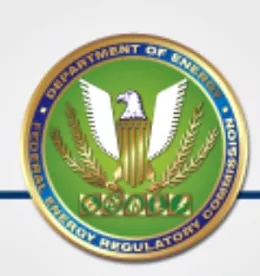At the Federal Energy Regulatory Commission (“FERC” or “Commission”), President Joseph Biden selected Richard Glick, one of two Democratic commissioners on the five person commission, as Chairman. The Chair sets FERC’s agenda, so even without a tie-breaker vote or a majority of Democratic Commissioners (the situation until one of the Republican Commissioners departs), Chairman Glick will have significant influence over FERC policy for 2021. As is most relevant for Sustainability Bulletin readers, FERC covered a lot of ground on renewables issues in 2020 and we expect more of the same for 2021. Chairman Glick’s dissents in 2019 and 2020 provide a roadmap for what we may see from FERC on renewables issues in 2021 and beyond. Below, we highlight a few material FERC renewables developments in 2020 and look ahead to possible developments in FERC’s approach when similar issues queue up before FERC in 2021.
Tension Between State “Subsides” and Wholesale Markets
One issue we expect to arise repeatedly is the tension between state policies that provide out-of-market payments to certain generation resources, including for renewable energy generation, on the one hand, and FERC’s regulations of organized markets, on the other hand. In addition to state incentives for development of renewable generation, the need for changes to market design for centralized Independent System Operator or Regional Transmission Organization (“ISO”) energy markets to accommodate the dramatic ramp up in renewables poses new challenges both to the individual ISOs charged with operating the grid and FERC.
The treatment of renewable resources in the forward capacity markets administered by the ISOs has been at the center of multiple disputes at FERC. For instance, late in 2019, FERC issued an order directing PJM Interconnection, L.L.C. (“PJM”) to expand its Minimum Offer Price Rule (“MOPR”) to nearly all generation facilities receiving “state subsidies,” as defined by FERC. FERC’s order was the result of a 2016 complaint alleging that the prior PJM MOPR did not account for the price suppressive effect of subsidized resources on capacity prices. Early in 2020, multiple parties requested rehearing of the order. On April 16, 2020, FERC largely denied the requests for rehearing and rejected arguments that its PJM MOPR order improperly intruded on the state’s traditional jurisdiction over generation. Chairman Glick, then a Commissioner, issued a separate dissent to the 2019 order and the order on rehearing, predicting that FERC’s actions would dramatically increase the price of capacity in PJM and slow the region’s transition to clean energy. Subsequent FERC orders in October 2020 and January 2021 largely affirmed FERC’s prior orders over protesters' objections. Several parties have petitioned for judicial review, and the order is in the early stages of the appellate process. (EL16-49-000, ER18-1314-000, ER18-1314-000, EL18-178-000).
The PJM MOPR cases could wind up back before FERC in 2021 or 2022 and the same issues will also be brought before FERC in other proceedings. Chairman Glick considers the Federal Power Act to be clear that the states—rather than FERC—are responsible for shaping the generation mix. We will likely see the Biden Administration’s FERC attempt to modify the holdings in the PJM MOPR proceedings.
Chairman Glick will preside over similar issues in 2021, when FERC responds to a complaint filed on October 14, 2020, by Cricket Valley Energy Center and Empire Generating Company (the owners of two gas-fired generation facilities) against the New York Independent System Operator, Inc. (“NYISO”), requesting that FERC find that all New York State resources be subject to a strict MOPR to the extent that the resources at issue are receiving out-of-market support. The complainants draw on many of the same arguments made in the PJM MOPR proceeding, claiming that similar action is necessary in NYISO to address the same price suppression concerns related to “subsidized” renewable resources. In response to the complaint, NYISO noted that its market is markedly different from the PJM market in several significant ways, including that NYISO is a single state ISO compared with PJM, an ISO spanning many states. A concern that supported PJM’s MOPR is that the MOPR would ensure that ratepayers in some states were not subsidizing other states' policy decisions. According to the NYISO, New York has unambiguous clean energy goals that include subsidies to certain types of resources and its ratepayers are bearing those costs. FERC has yet to rule in the case, but many argue that FERC could be overreaching by exerting its jurisdiction to “second-guess” an individual state's policy decisions by imposing a mechanism similar to the PJM MOPR. The Democratic FERC Commissioners may agree with that reasoning in support of states’ green energy policies. The proceeding, Docket No., EL21-7-000, remains pending before FERC.
Carbon Pricing
Expect to hear more from FERC on carbon pricing in 2021 too. On October 15, 2020, FERC issued a Proposed Policy Statement regarding carbon pricing in organized wholesale electricity market and requested comment. Carbon Pricing in Organized Wholesale Electricity Markets, 173 FERC ¶ 61,062 (2020). If issued as proposed, the statement would clarify that the Commission has “jurisdiction over RTO/ISO market rules that incorporate a state-determined carbon price.” The Commission also proposed that it be Commission policy “to encourage efforts to incorporate a state-determined carbon price in RTO/ISO markets.” Republican Commissioner James Danly dissented in part, agreeing that FERC has jurisdiction “to entertain section 205 filings that seek to accommodate state carbon-pricing policies, which is a fundamental principle that cannot be doubted,” but describing the issuance of a policy statement as “unnecessary and unwise.” However, we anticipate that the FERC under the Biden Administration will have an interest in pursuing the policy statement with the support of Chairman Glick, Republican Commissioner Neil Chatterjee, and Democratic Commissioner Allison Clements.
Changes Reducing Benefits to Certain Renewable Generation Owners
Qualifying Facility (“QF”) law will also continue to develop in 2021. In July 2020, FERC issued Order No. 872, a final rule intended to implement FERC’s statutory mandate to update rules promulgated pursuant to the Public Utility Regulatory Policies Act of 1978, as amended (“PURPA”). Qualifying Facility Rates & Requirements, Order No. 872, 172 FERC ¶ 61,041 (2020). FERC’s changes generally place additional restrictions on QF owners' ability to access some of the more favorable commercial terms mandated by Commission policy previously in place for several decades, thus limiting opportunities for renewable generation developers. As to QF benefits, PURPA generally imposes a mandatory obligation on any “electric utility” to purchase the energy and capacity from an interconnected QF – a particularly valuable benefit outside of ISO markets. See 18 C.F.R. § 292.303(a). QFs also enjoy relief from certain Federal Power Act and Public Utility Holding Company Act of 2005 requirements and from state regulation of utility rates and finances. Chairman Glick, then a Commissioner, voted no in part and issued a dissent in part to the new QF rules, expressing concerns that Order No. 872 did little to encourage the type of renewable energy project development PURPA intends to encourage. Should an appeals court agree that the agency undermined the statute, it is possible that FERC could oversee a remand on these issues. Even if the case is not reversed or remanded to FERC, we may see a Democratic FERC apply the new QF rules differently than we may have seen from the former Commission.
We also expect that on rehearing in 2021, FERC may clarify or perhaps modify or reverse a September 1, 2020 QF order that broke with decades of precedent regarding how it will determine whether a renewable resource is eligible for certification as a PURPA QF. Broadview Solar, LLC, 172 FERC ¶ 61,194 (2020). Applied on a prospective basis, the result of the Commission’s order is that renewable resources may no longer satisfy QF standards by voluntarily limiting their output to comply with the 80 MW cap on small power production QFs. The order is of particular concern to solar generation facilities because FERC’s Broadview order refused to take the use of DC-to-AC invertors into account when measuring the 80 MW cap. Commissioner Richard Glick dissented in this case too. The parties to the case sought rehearing and will likely appeal the order to federal court if the FERC’s analysis is not modified in an order on rehearing. The proceeding also involved whether a combined solar and storage facility owned by Broadview Solar, LLC complied with the FERC’s 80 MW cap for QFs. FERC did not reach the issue of whether co-located storage should be added to a small power production facility’s size for purposes of measuring the 80 MW cap in Broadview Solar. We expect that issue may be presented to and resolved by the FERC in 2021 or 2022.
FERC Enforcement and the Importance of Compliance
Finally, although Chairman Glick is expected to be supportive of renewables generally, owners of renewable resources should take notice of the Chairman’s statements about enforcement. He has repeatedly questioned the Commission’s level of commitment to enforcement and is expected to encourage an increase in enforcement activity. Virtual and speculative trading and out-of-market compensation for thermal energy resources historically have been the focus of FERC’s enforcement, but cases involving renewable resources are likely on the horizon. The Commission has reported multiple inquiries into offering practices related to wind resources, and participation by renewable resources in capacity markets pursuant to new price floor rules create additional compliance risk, which increases wherever there are stakeholder disputes and whenever there is change. Renewable resources are at the center of multiple stakeholder disputes related to price discovery and concerns around price suppression, and markets largely developed with non-intermittent resources in mind are transitioning to accommodate renewables. These changing markets and shifting market rules present new opportunities for mistakes and misunderstanding, which can lead to allegations of misstatements or violations of market rules.






 />i
/>i
